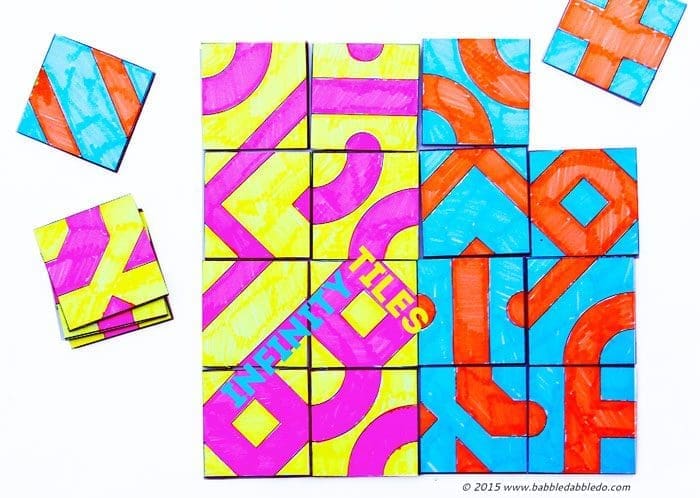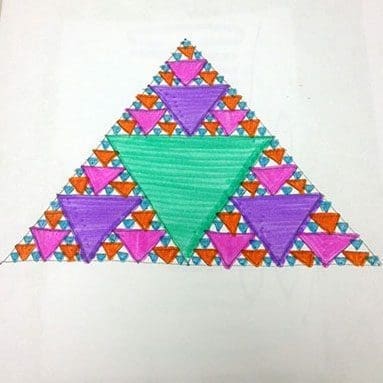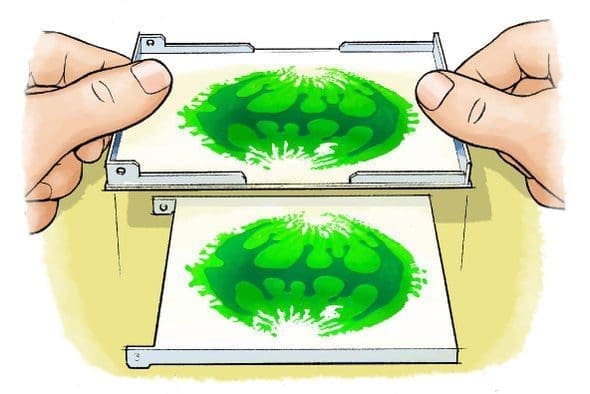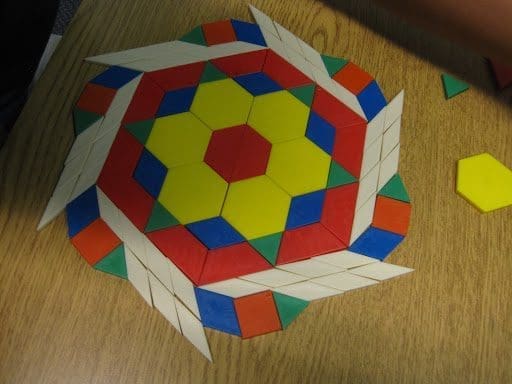One of my favorite math camp, math club, or enrichment topics for kids is exploring infinity, fractals, and tessellations. These topics aren’t part of the typical elementary and middle school math curriculum, but they build a deeper understanding of the patterns of math and specifically how math is used in nature and art. In my experience the kids absolutely love these topics. It’s a perfect fit for multi age groups.
Introducing Infinity
I like to introduce the concept of infinity to elementary and even middle school students by reading the book Infinity and Me. It’s a beautifully illustrated picture book about a young girl who asks for explanations of infinity from different people in her life, ranging from her school cook to her grandma. After reading the book I ask the kids draw their own ideas of what infinity is. This always leads to fantastic discussions.
Infinity tiles are a fun project that incorporates art with math. I use this free download from Babble Dabble Do. Students color or watercolor paint their tiles, then cut them apart and try putting them together in different ways. No matter how they rotate and move these tiles, there is always a continuous design. Some students also enjoy using rulers, compasses, and markers to design their own infinity tiles.

Fractals
I like to begin by reading the books Power of Patterns: Fractals and Mysterious Patterns: Fractals In Nature.
Finding Fractals in Nature
After we read the books investigate the fractals in broccoli and fern leaves. Students use magnifying glasses to examine them.
Here are other images to show kids.
We also go on a walk outside and use this Nature Walk Bingo card to find examples of fractals in nature. (recommended for all ages kindergarten-12th grade) or go on a Fractal Scavenger Hunt
Fractal Videos
If you have older or advanced students who are very interested in this topic (or if you want a clearly explained deeper understanding for yourself) here is a more detailed video of the math involved.
Fractal art projects:
Sierpinski 2D triangle from Artsmudge for grades 2-5

You could also use this to teach Pascal’s triangle and have students fill in the addition patterns.

3D Sierpinski fractal tetrahedron for 5th grade and up (I have done it with younger students one on one but it requires patience and careful cutting, folding and taping)
Christmas tree version of fractal tetrahedron

Instead of using paper templates, you could use these instructions for building tetrahedrons with drinking straws, newspaper tubes, or toothpicks
Or use this activity from the Fractal Foundation to build the tetrahedrons with toothpicks and mini marshmallows. (recommended for 3rd-12th grade)


Finger-painting fractals from the Scientific American

Need even more fractal ideas? The Fractal Foundation is a fabulous resource.
Tessellations
Our final exploration of infinity is tessellations. We:
- read the book Toads and Tessellations
- play with perpetual puzzles,
- make tessellations with pattern blocks and/or Legos


- and then make our own paper tessellation art.
If you don’t want to buy the perpetual puzzles there is a free print and color version available here.

One final idea I haven’t tried yet but looks fun is to bake tessellation brownies

I hope these ideas for exploring infinity, fractals and tessellations with kids are helpful to you. If you have additional resources feel free to add them in the comments below!
For more math in art and nature ideas see my post Teaching Symmetry.



